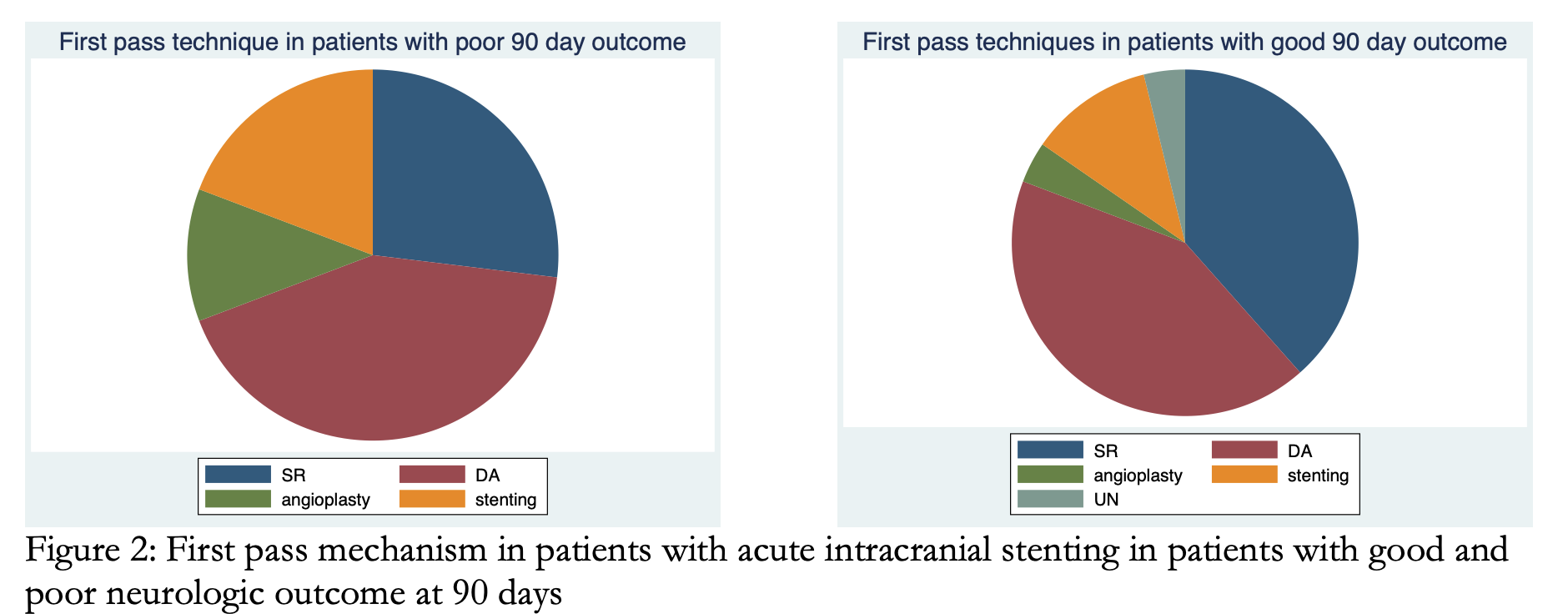Abstract
Introduction:
Rescue treatment for failed thrombectomy in patients with acute ischemic stroke (AIS) from large vessel occlusion (LVO) remains controversial. We report our institutional experience with using intracranial stenting of occlusion refractory to aspiration and stent retriever thrombectomy.
Methods:
We performed a retrospective review of our prospectively maintained thrombectomy database to identify the LVO AIS patients who underwent intracranial stenting during endovascular thrombectomy between 1/2015-7/2021. Modified Rankin scale (mRS) at 90 days was used as primary outcome. Secondary outcomes included symptomatic intracerebral hemorrhage (sICH), and mortality at 90days.
Results:
We identified 47 acute ischemic stroke patients who underwent intracranial stenting acutely. Median age was 66 years (Interquartile range (IQR 58-75), median baseline mRS was 0 (IQR 0-1), median NIHSS score was 13.5 (IQR 7-18), and median ASPECTS was 9 (IQR 8-10). The median number of thrombectomy passes prior to stenting was 3 (IQR 2-4). In 48% of patients, a combination of aspiration and stent retriever techniques were used prior to intracranial stenting. Majority of the patients (93%) were loaded with anti-thrombotics intraoperatively. Successful recanalization (TICI 2 B or better) was achieved in 96% of the patients. Fourty nine percent of our cohort had good outcome at 90 days. A total of 4 patients (8.5%) developed a sICH, with a 90 day mortality of rate of 17.0% (8/47).
Conclusion:
Rescue intracranial stenting is a safe and effective approach in patients with emergent large vessel occlusion refractory to aspiration and stent retriever thrombectomy.

This work is licensed under a Creative Commons Attribution-NonCommercial-NoDerivatives 4.0 International License.
Copyright (c) 2022 Journal of Vascular and Interventional Neurology

